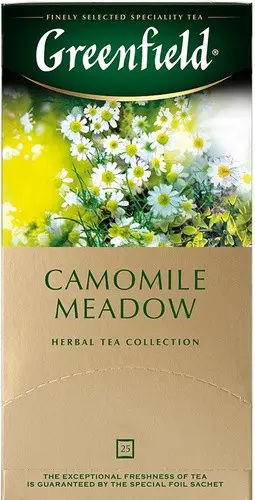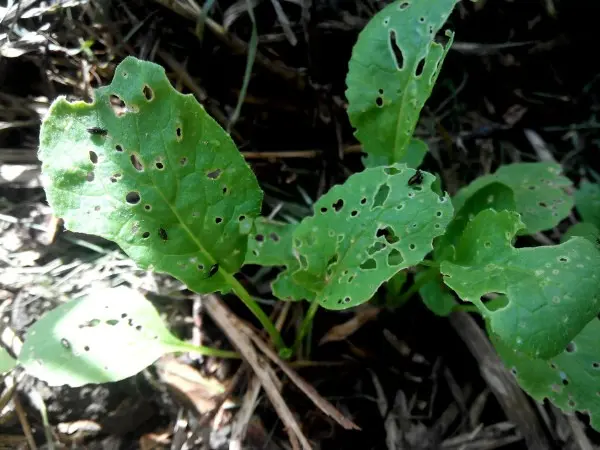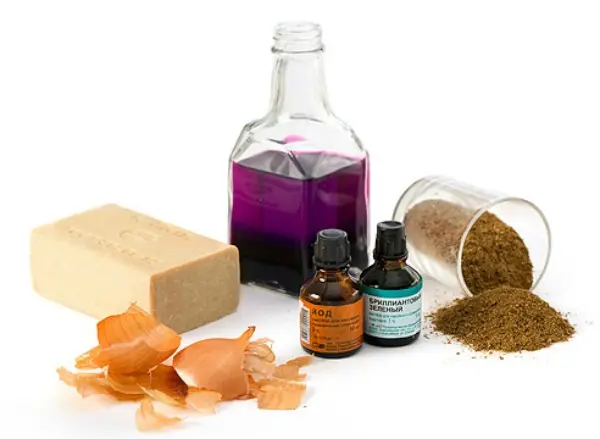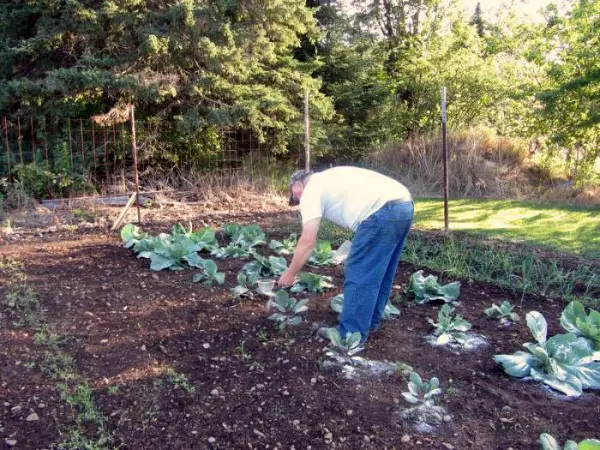

Habitual and simple, it would seem, radish. What could be simpler and less demanding to maintain? But even this culture found its own, quite dangerous, pest – the cruciferous flea. This small insect is capable of causing great damage to the future crop, destroying young shoots at a rapid pace. We will talk about how to prevent such an annoying nuisance in this article.
What is a pest
The cruciferous flea is a pest insect that is very common in our latitudes. Once in favorable conditions for themselves, these insects are able to completely destroy the seedlings of not only radishes, but also young seedlings of cabbage, radish and other crops of the same family in a few days.
The pest wakes up after wintering, as soon as the soil begins to thaw. In early spring, insects feed on weeds from the cruciferous family, and with the advent of seedlings of vegetable crops of this family, they switch to them with pleasure. That is why it is very important to prevent the mass reproduction of weeds in the beds, removing them in time.

Flea larvae, living in the soil, feed on the roots of plants, and cultures with root crops strike at the root neck. As the larva develops and rises to the surface, it switches to young leaves, provoking their gradual drying and leading to the death of the entire plant. Sometimes the flea damages the plant at the point of growth, which naturally kills the plant. Particular activity in the pest is observed in a dry, hot period.
Prevention
Preventive measures in the fight against such a pest as the cruciferous flea are to process seedlings in a timely manner. Including widely used folk remedies. For example, a flea extremely dislikes naphthalene: you can “powder” the affected young radish with a mixture of road dust and naphthalene (in a 1: 1 ratio) using a gauze bag. Another effective mixture is tobacco dust, slaked lime and ash, mixed in equal proportions.

Good results can be achieved by spraying. In this way, you need to process radishes early in the morning, as they say, “by dew”. A tool consisting of wood ash (one liter jar), water (3 liters) and a few tablespoons of liquid soap can effectively repel harmful bugs from your garden. But a one-time treatment is not enough: with such an infusion, seedlings need to be sprayed every five days, the total number of treatments can reach six.
Another public remedy that is widely used by gardeners to prevent damage to radishes by pests is ordinary acetic acid. The recipe for the preparation of the drug is simple: 1 cup of 9% vinegar is diluted in 10 liters of water. The resulting mixture is sprayed with seedlings. Sometimes summer residents use an infusion of garlic, a decoction of dandelion leaves or green wormwood as preventive measures. All these decoctions or infusions really do not like insect pests.

The geography of plantings also helps to prevent the appearance of fleas on radishes: potatoes, tomatoes, dill or cumin are planted around cruciferous plants.
All these cultures release specific substances into the environment, which are strongly disliked by bugs and midges. Some flowers, for example, familiar marigolds or calendula, have a similar effect.
Methods of struggle
All of the above methods are suitable as preventive measures; they are unlikely to be suitable for combating a rampant pest.
The most effective method is the treatment of plants with an insecticide, for example, Inta-Vir. But this tool can be resorted to with some restrictions:
- the drug is applicable only to medium-sized radishes, whose ripening period is at least 25 days, otherwise the lion’s share of the product will settle in the root crops;
- processing can be carried out exclusively on young shoots, until the root crop begins to form, and only when the threat of destruction hangs over all shoots.

There is another, rather exotic, way to deal with such a pest as a flea: radish seedlings are covered with white agrospan.
If the weather is not very hot, then the plants under cover do not stretch out, and the flea does not start en masse on them. After the seedlings are sufficiently strong, the covering material should be removed, and further processing of the beds should be done with wood ash.
And finally, some useful tips that will help you grow healthy and healthy radishes:
- try to organize drip irrigation for radishes so that the infusion of ash is not washed off the leaves at the first watering from above;
- if weeds from the cruciferous family grow near the beds with radishes, it will not be superfluous to treat them with special chemistry from pests;
- you should not resort to specialized chemicals for pest control on early varieties of radishes: you will most likely get rid of bugs, but you will pretty much “pump” radishes with harmful substances that will not bring you anything useful.
Video “Fighting the cruciferous flea”
In this video you will find useful tips on how to deal with flea on cruciferous plants.
Author: Svetlana Galitsina
Loading…









